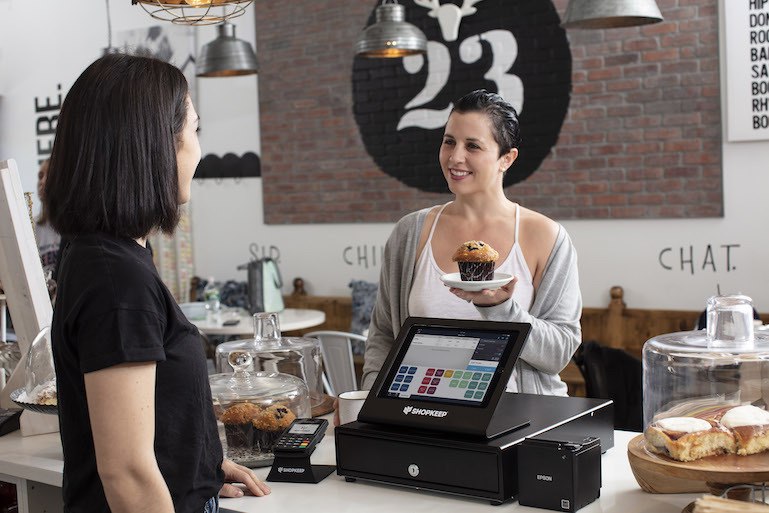
Choosing A POS System: Your 90-Day Plan
Choosing a POS (point of sale) system is an incredibly important step that is often overlooked when starting a small business.
While most small retailers understand that buying a POS system is a task that should not be taken lightly, most are not clear on how to purchase or upgrade to a new system. But putting this decision off costs independent retailers thousands of dollars in annual revenue.
With literally thousands of options at your disposal, we understand that shopping for a POS system that meets your needs isn’t easy. To help you make an informed decision while hanging onto your hard-earned money, we’ve amassed a 90-day buyer’s guide to streamlining the process.
Phase I: How to Research POS Systems
Without sufficient information, it can be close to impossible to identify which POS system will compliment your business needs. In the ideal scenario, for your first 30 days, you should be fully committed to researching the right solution.
Day 90: Identify What to Expect from Your POS System
Modern POS systems can possess more features than you’d ever thought possible, but this can be a bit of a double-edged sword. Narrowing down what to look for in a POS system is difficult when you have hundreds of useful features from which to choose. It’s important, however, to remember that your unique business will have specific needs. When it comes to point of sale, there is no one-size-fits-all solution.
There are, however, a few must-haves for all business types. These include access to sales reporting, customer management tools, inventory management capabilities, and employee management features.
Before buying a point of sale system, make a list of functions that are necessary for improving business efficiency, as well as a list of features you would prefer to have to enhance your business. When creating your features list, consider easy-of-use, flexibility, and accessibility.

Day 80: Narrow Down Your Options
There are tons of different POS systems that are targeted at specific business types, including retail stores, restaurants, bars, and quick service restaurants. This guide can help narrow down your search to a more manageable number of choices. When purchasing a POS system, choose one that not only meets your specific feature requirements but also checks all of the boxes on your business type’s “necessary features” list. For example: If you are a bar or quick service restaurant, ingredient level inventory tracking and the ability to keep customer tabs open are business-specific features you don’t want to skimp on.
Day 70: Read Reviews and Referrals
Once you have a list of your top contenders, you’ll want to comb through POS software reviews for useful, unbiased assessments of your top choices. Software Advice and Merchant Maverick are some examples of user review sites that can help you identify the important features to look for when purchasing a POS system for your business.
SEE ALSO: How to Use an iPad Cash Register
Phase II: How to Select a POS System
Each previous step has focused on using the process of elimination to narrow down your search for the ideal point of sale system. The next few steps are intended to help you make the right decision for your business and simplify the implementation process.
Day 60: Reach Out to Point of Sale Providers
Modern tablet-based POS systems are much more responsive than traditional cash registers. When buying a POS system, you want to ensure that it’s intuitive, reliable, and can adapt to your growing business’ needs.
Here are a few questions to ask to make an informed business decision, including:
How will purchasing this system fulfill my needs? The worst thing you could do is pay for a system and then realize it isn’t ideal for your business. To avoid this, use the information gathered during the research stage to inquire about specific business features and how they can be leveraged to improve day-to-day operations in your business.
What are the pricing plans and packages available to me? Be wary of providers that give you partial pricing information. When buying a POS system, It’s important to dig deep and ask about any potential hidden fees, processing fees, add-ons, and monthly payments. Some valuable questions to follow up with are: Is support included in this price? If so, what level of support will I have access to? Are there any fees associated with updating the system? Ideally, you’ll want a system with rolling updates and flexible pricing options — this way you’re not surprised with additional fees down the road.
Is the hardware proprietary? Ideally, you won’t have to switch POS systems after investing in your first one. However, it is not a bad idea to ask about hardware compatibility. If you end up having to transition over to a new system, it’s always nice to have the option to reuse or resell your equipment.
Depending on your business type and the kind of system you need, you may find yourself having to ask just a few more questions.
SEE ALSO: Point of Sale Definitions: The Lingo You Need to Know
Day 50: Try Them Out Hands-on
Most service providers will allow you to sample their product, before making a final call, with a free trial or freemium version of their point of sale solution. Because purchasing a point of sale system is an important business investment, it is wise to test drive your point of sale system before making a buying decision. This will allow you to get a sense of what your day-to-day experience will be like, and whether or not a particular service provider is sustainable for your business’ long-term operation.
Day 40: Make Your Final Selection
Once you’ve done your due diligence and sampled all of your POS options, you should have a firm idea of which system will meet your business’ operational and budgetary needs. Now that you’re ready, go ahead and pull the trigger.
Phase III: How to Set Up Your POS and Train Staff Members
Earlier on in the process, you should’ve established the setup and implementation process with your POS provider. Some services offer out-of-the-box solutions while others require experts to visit your physical storefront and complete the installation. Assuming that you have decided on a system that eliminates the need for complicated setups, here’s what you can expect:
Day 30: Set Up Your Hardware
The first step in implementing your POS system is to make sure that all of the hardware necessary for your setup has arrived and is in place. Most point of sale providers will have a startup guide and best practices to help you get started, but an intuitive POS system should only take minutes to install. But, because some of us are more technically inclined than others, you’ll want to ensure that you have access to an expert that can offer setup assistance and comprehensive training — if needed.

Day 20: Set Up Your Software
If you’re using an iPad-based system that requires software installation before setup, you may be able to download your register application before the hardware setup. However, if this is not the case, once your POS hardware is in place, you’ll want to ensure that you have access to the software that is going to transform your iPad into a sophisticated payments system.
Day 10: Train Your Staff
While most modern point of sale systems require little to no training time, It’s important to establish a staff training practice that is both detailed and organized enough to ensure that all of your staff members fully understand the register basics. Some point of sale providers offer cashier training materials that you can leverage for your business, so make sure to ask about resources like these during the buying and setup process.
Day 0
Buying the right point of sale system is a crucial aspect of setting up a successful retail operation. Because understanding how to go about purchasing a pos system can seem a little off-putting, many small business owners overlook this very necessary step, resulting in a lack of efficiency and, ultimately, negatively impacting sales.
If your POS system doesn’t fit your business needs, the lacks of essential features will ultimately lead to unnecessary costs. In the early stages of running a business, this can make or break your retail operation. Use the guide below to avoid costly mistakes.

Want to try ShopKeep for yourself?
Just answer a few easy questions.
Need help finding the right point of sale?
Just complete the form. We’ll call you right back to explain how ShopKeep can work for you.
Hit the ground running.Sprinting, in fact!
Read our free, comprehensive guide, Small Business 101, to learn all you need to know about starting a thriving business.

